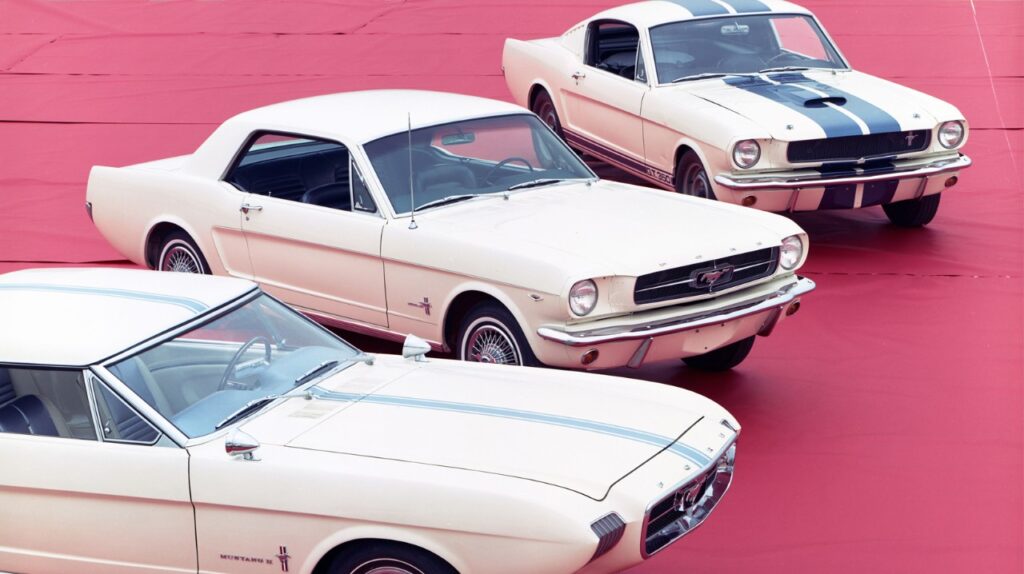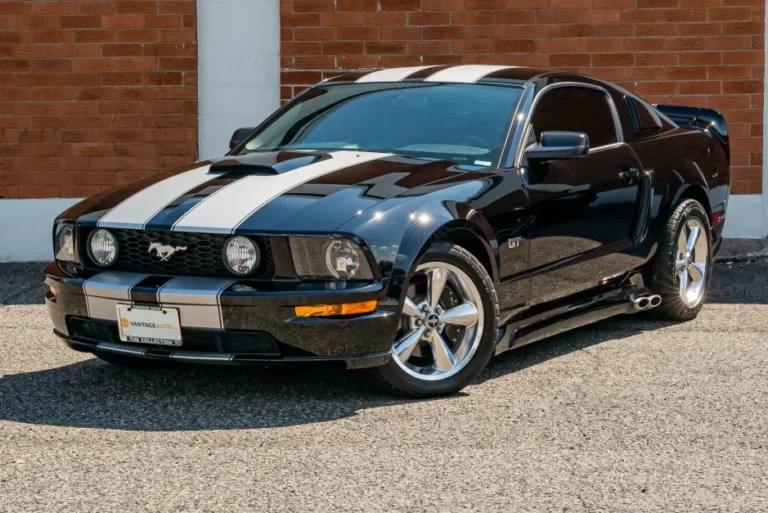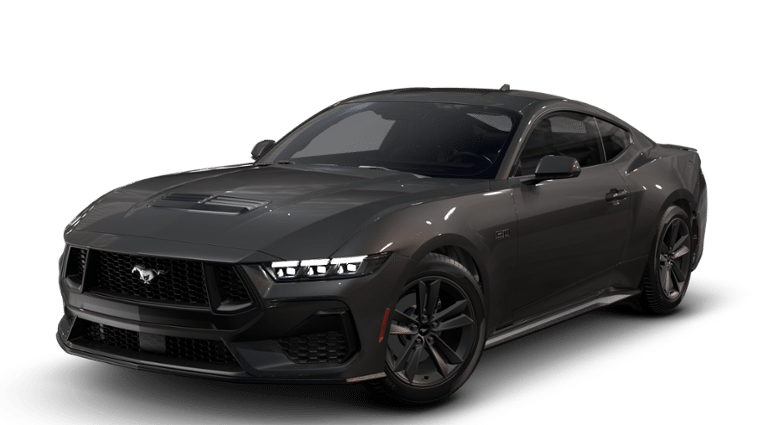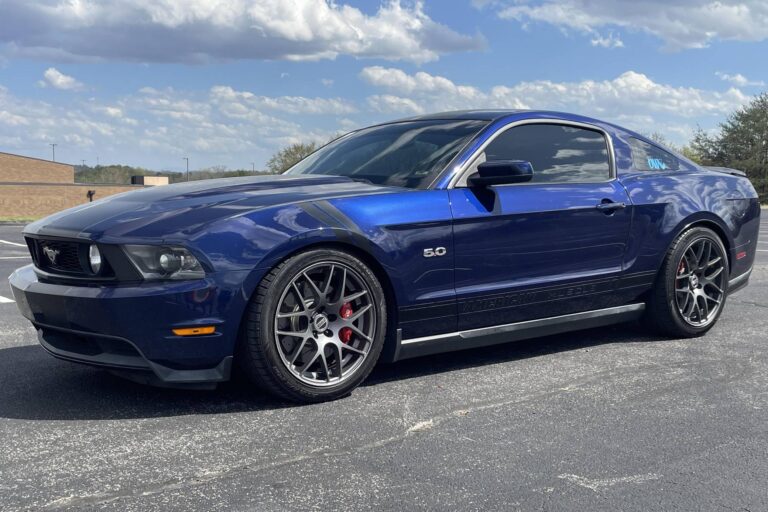The Ford Mustang debuted in 1964, revolutionizing the automotive industry. It quickly became an iconic symbol of American muscle cars.
The Mustang’s introduction marked a new era in car design and performance. Ford created a vehicle that appealed to young drivers seeking speed and style. The Mustang’s sleek design and powerful engine options made it an instant hit. Over the decades, it evolved with technological advancements, maintaining its strong fan base.
The Mustang’s legacy includes numerous models and special editions, each contributing to its storied history. Today, it remains a beloved symbol of American innovation and performance, continuing to capture the hearts of car enthusiasts worldwide.
Introduction To The Ford Mustang
The Ford Mustang is an iconic American muscle car. It has a rich history spanning several decades. This car has become a symbol of power, speed, and style. Let’s explore its origins and early market impact.
Origins And Concept
The Ford Mustang was introduced in 1964. It was created to appeal to young buyers. The car was affordable and stylish. Ford wanted a car that stood out. The Mustang was designed to be sporty and powerful.
| Feature | Details |
|---|---|
| Designer | Lee Iacocca |
| Launch Year | 1964 |
| Initial Price | $2,368 |
- Sporty design
- Affordable price
- Powerful engine options
Initial Market Impact
The Mustang was an instant hit. It sold over 22,000 units on its first day. By 1966, Ford had sold over one million Mustangs. The car was popular among young people. It became a cultural icon.
- First-day sales: 22,000 units
- Sales by 1966: Over one million units
- Popular among young buyers
The Mustang also appeared in movies and TV shows. This boosted its popularity further. The car’s success led to many competitors.
Today, the Ford Mustang remains a beloved classic. Its legacy continues to inspire car enthusiasts around the world.
The First Generation (1964-1973)
The Ford Mustang’s first generation spanned from 1964 to 1973. It marked the birth of an American icon. These years saw the Mustang evolve from a simple sports car to a cultural phenomenon. Let’s dive into the key aspects of this legendary era.
Design And Features
The first Mustang debuted in 1964 as a sleek, compact car. It featured a long hood and short rear deck. The car offered many customization options. Buyers could choose from various engines, colors, and interior trims.
A unique feature was the pony emblem on the grille. This symbol became synonymous with the Mustang brand. The car’s design evolved over the years, but it always retained its sporty appeal.
In 1967, the Mustang got a significant redesign. It became larger and more powerful. New features included a fastback roofline and a V8 engine. By 1971, the Mustang had grown even larger. It now offered a more luxurious interior and advanced safety features.
Cultural Influence
The first-generation Mustang had a huge impact on American culture. It became a symbol of freedom and adventure. Young people especially loved it. The car appeared in many movies and TV shows.
One of the most famous appearances was in the movie “Bullitt”. Actor Steve McQueen drove a 1968 Mustang GT in a legendary car chase. This scene cemented the Mustang’s status as a cultural icon.
The Mustang also influenced other car manufacturers. It inspired the creation of the “pony car” segment. Competitors like the Chevrolet Camaro and Dodge Challenger soon followed. The Mustang’s legacy continues to inspire new generations of car enthusiasts.
The Muscle Era (1974-1993)
The Ford Mustang experienced significant changes during the Muscle Era. This period marked a transformation in design, performance, and cultural impact. From 1974 to 1993, the Mustang evolved into an iconic muscle car.
Performance Enhancements
During the Muscle Era, the Mustang’s performance saw major improvements. Ford introduced powerful engines, which boosted the car’s speed and agility. For example, the 1982 Mustang GT featured a 5.0-liter V8 engine. This engine produced 157 horsepower, making it a favorite among car enthusiasts.
| Year | Model | Engine | Horsepower |
|---|---|---|---|
| 1979 | Mustang Turbo | 2.3L Turbo | 132 |
| 1982 | Mustang GT | 5.0L V8 | 157 |
| 1987 | Mustang GT | 5.0L HO V8 | 225 |
Popularity In Pop Culture
The Ford Mustang became a cultural icon during this era. It appeared in movies, TV shows, and music videos. For instance, the Mustang was featured in the hit TV show “Knight Rider”. This exposure increased its popularity among young drivers.
- The Mustang in “Knight Rider” became an instant classic.
- Music videos showcased the Mustang’s sleek design and power.
- Car enthusiasts loved the Mustang’s performance and style.
The Mustang also made its mark in racing. It competed in numerous drag races and won many titles. This boosted its image as a true muscle car. Fans admired its speed, power, and reliability.

Credit: corporate.ford.com
The Modern Mustang (1994-2004)
The Modern Mustang era, spanning from 1994 to 2004, marked a significant evolution for Ford’s iconic pony car. This period saw the Mustang undergoing dramatic changes in terms of design, technology, and market positioning. The Modern Mustang revitalized the brand and captured the hearts of both old and new enthusiasts.
Technological Advances
Between 1994 and 2004, the Ford Mustang embraced several technological advances. The 1994 Mustang introduced a new platform called the SN-95. This platform provided better handling and improved safety features.
The engine options also evolved. For example, the 1994 Mustang GT featured a 5.0L V8 engine. In 1996, Ford replaced this with a 4.6L Modular V8, offering more power and efficiency. The 1999 model saw further updates, with the introduction of the New Edge design. This design brought sharper lines and a more aggressive look.
ABS brakes and traction control became standard features, enhancing the driving experience. The interior technology also advanced. Features like power seats, CD players, and improved air conditioning became common.
Market Position
The Ford Mustang maintained a strong market position during this period. It competed directly with other muscle cars like the Chevrolet Camaro and Dodge Challenger. The Mustang was popular among both young drivers and older enthusiasts. Its mix of power, style, and affordability made it a top choice.
Ford introduced special editions to boost sales and market appeal. These included the Mustang Cobra and Bullitt editions. These models offered unique styling and performance upgrades. The Mustang also enjoyed success in motorsports, further cementing its reputation.
Below is a table summarizing the key models and their features from this era:
| Model Year | Key Features |
|---|---|
| 1994 | SN-95 platform, 5.0L V8 engine |
| 1996 | 4.6L Modular V8 engine |
| 1999 | New Edge design, improved safety features |
| 2001 | Bullitt edition, unique styling |
| 2003 | Mustang Cobra, supercharged V8 engine |
The Modern Mustang era solidified the car’s place in automotive history. Its blend of technological innovation and market strategy kept it ahead of the competition.
The Fifth Generation (2005-2014)
The fifth generation of the Ford Mustang was a remarkable era. This period saw the Mustang return to its roots with a design that honored its heritage. The cars produced during this time were known for their retro-inspired look and significant performance improvements.
Retro-inspired Design
The fifth-generation Mustang featured a design inspired by the original 1960s models. Ford aimed to bring back the classic Mustang feel with modern touches. The body had a bold and muscular look, with a long hood and short rear deck. This design made the Mustang stand out on the road.
The interior also embraced the retro theme. It combined classic elements with modern technology. The dashboard was designed to look like the 1967 model, but with updated features. This blend of old and new made the fifth-generation Mustang unique.
| Feature | Retro Element | Modern Touch |
|---|---|---|
| Body | Long hood, short deck | Aerodynamic design |
| Interior | 1960s-style dashboard | Modern controls |
Performance Improvements
The fifth-generation Mustang wasn’t just about looks. It also had significant performance upgrades. Ford introduced new engines that provided more power and better fuel efficiency. The base models came with a 4.0L V6 engine, producing 210 horsepower. The GT models featured a 4.6L V8 engine, delivering 300 horsepower.
In 2011, Ford introduced the 5.0L V8 engine in the GT models. This engine produced an impressive 412 horsepower. This made the Mustang a powerful contender in its class. The suspension and handling were also improved, offering a smoother and more controlled ride.
- 4.0L V6 engine – 210 horsepower
- 4.6L V8 engine – 300 horsepower
- 5.0L V8 engine – 412 horsepower
The fifth-generation Mustang balanced retro style with modern performance. This era left a lasting impact on the Mustang legacy.
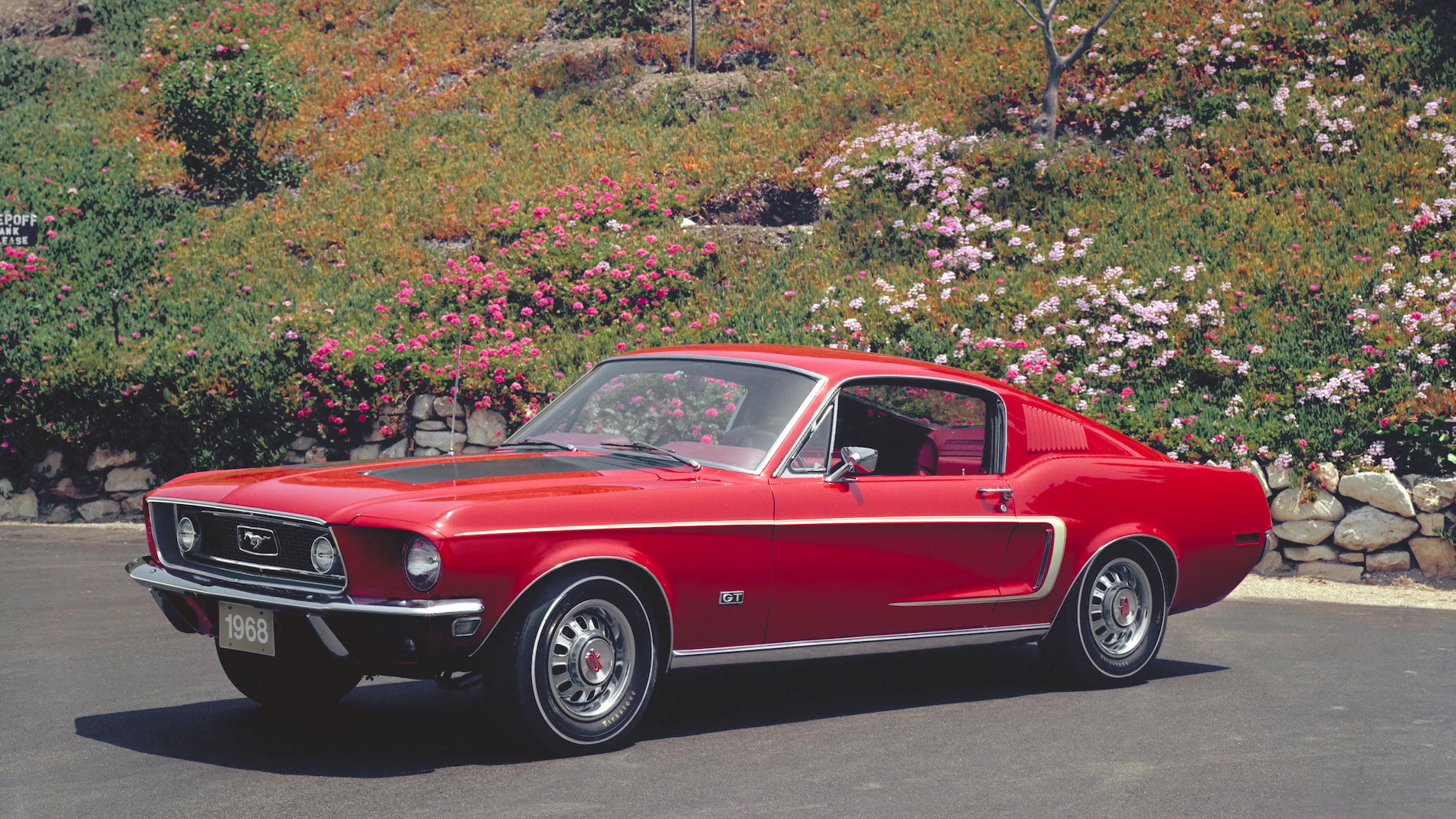
Credit: www.motorauthority.com
The Sixth Generation (2015-present)
The sixth generation of the Ford Mustang launched in 2015. This generation brought modern styling and advanced technology. It marked a significant shift in Mustang’s history.
Global Appeal
The sixth generation Mustang became a global car. Ford offered it in over 140 countries. This was the first Mustang available in right-hand drive. This move opened new markets in countries like the UK, Australia, and Japan.
European and Asian markets embraced the Mustang’s iconic design. Its powerful engine options and sporty look attracted many new fans. Ford also made sure the Mustang met local regulations and standards.
This global strategy paid off. Mustang sales soared worldwide. It became a symbol of American muscle cars, loved by fans everywhere.
Innovative Features
The sixth generation Mustang introduced many innovative features. These included both performance and safety upgrades. Ford equipped the Mustang with independent rear suspension for better handling. This was a big change from the previous solid axle.
Inside, the Mustang offered modern technology. It included a large touchscreen with Ford’s SYNC system. This made navigation and entertainment easier. The cabin also featured high-quality materials and a comfortable design.
Safety was a priority in this generation. The Mustang included advanced safety features like:
- Adaptive Cruise Control
- Blind Spot Monitoring
- Rearview Camera
- Electronic Stability Control
Ford also offered different engine choices. Buyers could choose from a turbocharged 2.3L EcoBoost, a 5.0L V8, or a 3.7L V6. This range of engines catered to different needs and preferences.
The sixth generation Mustang also had special editions. These included the Shelby GT350 and GT500, known for their high performance. Enthusiasts appreciated these models for their power and track-ready capabilities.
Overall, the sixth generation Mustang combined classic style with modern innovations. This made it a favorite among both old and new fans.
Special Editions And Models
The Ford Mustang is known for its special editions and models. These unique variants have their own stories. They add to the rich history of the Mustang. Let’s explore some of the most iconic ones.
Shelby Variants
Shelby Mustangs are among the most famous special editions. They were first introduced in 1965. The collaboration between Ford and Carroll Shelby created magic.
The 1965 Shelby GT350 was a true performance car. It had a powerful V8 engine. It was known for its speed and agility.
In 1967, the GT500 joined the lineup. It had a larger 428 cubic-inch V8 engine. This made it even more powerful than the GT350.
Over the years, Shelby Mustangs have evolved. Modern models like the GT500 continue the legacy. They feature advanced technology and high performance.
| Model | Year | Engine |
|---|---|---|
| GT350 | 1965 | 289 cubic-inch V8 |
| GT500 | 1967 | 428 cubic-inch V8 |
Bullitt And Mach 1
The Bullitt Mustang is another iconic model. It was inspired by the 1968 movie “Bullitt”. Steve McQueen drove the original Bullitt Mustang in the film.
The modern Bullitt Mustangs carry on the tradition. They feature unique styling and performance upgrades. The 2001 Bullitt was the first modern version. It was followed by models in 2008, 2019, and 2020.
The Mach 1 is a performance-oriented Mustang. It was first introduced in 1969. It offered more power and better handling.
The Mach 1 has seen several iterations. The 2021 Mach 1 brings modern performance to the classic name. It combines elements from the GT350 and GT500.
- 2001 Bullitt Mustang
- 2008 Bullitt Mustang
- 2019 Bullitt Mustang
- 2020 Bullitt Mustang
Both Bullitt and Mach 1 Mustangs are celebrated. They offer unique driving experiences. They remain favorites among Mustang enthusiasts.

Credit: m.youtube.com
The Future Of The Mustang
The Ford Mustang’s future looks bright. This iconic car continues to evolve with the times. Let’s explore the exciting developments on the horizon.
Electric And Hybrid Models
Ford is embracing the electric revolution. They are introducing electric and hybrid models of the Mustang. These new models offer a blend of performance and efficiency.
The Mustang Mach-E is a prime example. This electric SUV delivers powerful performance. It also offers impressive range on a single charge. The electric Mustang keeps the spirit of the original while moving towards a greener future.
| Model | Type | Range |
|---|---|---|
| Mustang Mach-E | Electric | 300 miles |
| Hybrid Mustang | Hybrid | 550 miles |
Continued Evolution
The Mustang brand continues to evolve. It adapts to changing technologies and consumer preferences. Ford is committed to innovation while maintaining the Mustang’s core identity.
Future Mustangs may feature advanced technologies. These include autonomous driving capabilities and enhanced safety features. The Mustang will remain a leader in performance and style.
- Advanced Safety: New safety features protect drivers and passengers.
- Autonomous Driving: Future models may drive themselves.
- Enhanced Connectivity: Stay connected with the latest tech.
The Mustang will continue to captivate enthusiasts worldwide. Its blend of heritage and innovation ensures a bright future. Stay tuned for more exciting developments in the Mustang lineup.
Frequently Asked Questions
What Year Was The Ford Mustang First Introduced?
The Ford Mustang was first introduced in 1964. It debuted at the New York World’s Fair. This iconic car quickly became a symbol of American automotive culture.
How Did The Ford Mustang Get Its Name?
The Ford Mustang was named after the P-51 Mustang fighter plane. The name signifies power, speed, and freedom. It perfectly captures the car’s spirit and performance.
What Makes The Ford Mustang Unique?
The Ford Mustang is unique for its powerful engine and sleek design. It offers a blend of performance and style. Its affordability also sets it apart from other sports cars.
What Are The Different Mustang Models?
The Ford Mustang comes in several models, including GT, Mach 1, and Shelby GT500. Each model offers varying levels of performance and features. They cater to different driving preferences and budgets.
Conclusion
The Ford Mustang has left an indelible mark on automotive history. Its iconic design and powerful performance continue to captivate enthusiasts. From its 1964 debut to the present, the Mustang remains a symbol of American muscle. This legendary car’s legacy will undoubtedly inspire future generations of car lovers.

